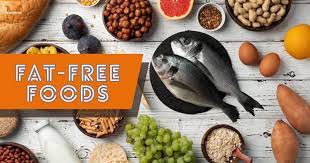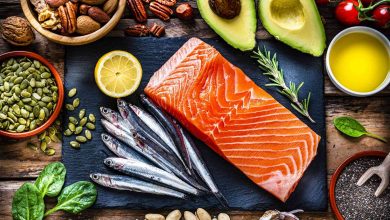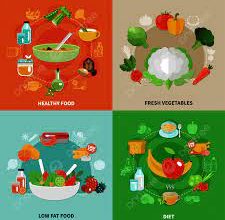Nourishing Wellness: The Role and Diversity of Low-Fat Foods in a Balanced Diet
The Role and Diversity of Low-Fat Foods
Introduction:
Low-fat food sales have surged due to the growing desire for a healthier lifestyle in the constantly changing field of nutrition. This essay examines the role that low-fat foods have in enhancing general health, busting fat-related stereotypes, comprehending the wide variety of low-fat alternatives available, and adopting a balanced diet.
The Importance of Low-Fat Diets:
Because low-fat diets may help with weight control and cardiovascular health, they have come to be associated with healthy living. Lower cholesterol and a lower risk of heart disease are linked to consuming fewer saturated and trans fats. Additionally, following a low-fat diet can help maintain and lose weight while promoting a healthy body composition.
Dispelling Myths about Fats:
It’s important to bust some common misconceptions about fats before diving into the realm of low-fat meals. The demonization of fats in general oversimplifies the nuanced nutritional landscape, as not all fats are created equal. Nuts, avocados, and olive oil are rich sources of monounsaturated and polyunsaturated fats, which are essential for many body processes, including hormone synthesis and brain function. Knowing the difference between good and bad fats is essential to choosing a diet that suits your needs.
The Diversity of Low-Fat Options:
There are so many tasty and healthy low-fat alternatives available that it is a myth that low-fat diets mean bland or limited meals. Lean proteins—fish, poultry, tofu, and legumes—are the cornerstone of a low-fat diet because they supply vital amino acids without having an excessive amount of saturated fat. A well-rounded and fulfilling culinary experience is enhanced by the addition of fiber, vitamins, and minerals that come from using whole grains, fruits, and vegetables.
Navigating Low-Fat Proteins:
Proteins are essential for healthy muscles, a strong immune system, and general wellbeing. Choosing lean protein sources is essential to following a low-fat diet. Skinless chicken and turkey are examples of poultry, which is a lean protein choice that may be cooked in a variety of delectable ways. Fish, which is high in omega-3 fatty acids, not only offers vital nutrients but also fits in with the heart-healthy diet guidelines. Plant-based proteins such as beans, lentils, and tofu provide wholesome substitutes for anyone following a vegetarian or vegan diet.


Whole Grains for Sustained Energy:
Whole grains are an important source of long-lasting energy and vital elements in low-fat diets. Whole wheat, quinoa, brown rice, and oats are adaptable substitutes that work well in a range of recipes. These grains contribute to overall nutritional balance and satiety by offering fiber, complex carbs, and a variety of vitamins and minerals.
Fruits and Vegetables: Nature’s Nutrient Powerhouses:
When it comes to diets low in fat, fruits and vegetables are nutritious powerhouses. These vibrant and varied options offer a variety of fiber, vitamins, minerals, and antioxidants. A wide range of fruits and vegetables, from colorful berries to leafy greens, improve the nutritional density of meals and provide for a more enjoyable dining experience.
Low-Fat Dairy: A Source of Essential Nutrients:
Vitamin D and calcium are two important elements that may be found in dairy products. Those who choose low-fat or fat-free dairy products, including yogurt, reduced-fat cheese, and skim milk, can still get the benefits of these nutrients without consuming the additional saturated fats that come with full-fat dairy. These substitutes adhere to the guidelines of a low-fat diet while retaining the creamy flavor and texture.
Healthy Fats for Flavor and Nutrition:
While cutting back on bad fats is the main goal, adding healthy fats is just as important for taste and nutrition. Rich in monounsaturated fats, avocados provide food a creamy mouthfeel and a variety of vitamins and minerals. When added to salads or eaten as a snack, nuts and seeds provide important nutrients and healthy fats in addition to protein. Olive oil is a delicious source of monounsaturated fats and is a mainstay of Mediterranean cuisine.
Culinary Creativity with Low-Fat Ingredients:
The myth that boring or ugly dishes are synonymous with low-fat diets ignores the creative culinary possibilities that low-fat foods may unleash. Citrus juices, herbs, spices, and other aromatic additions can improve the flavor of low-fat foods. Techniques like grilling, roasting, and steaming can improve tastes without using a lot of fat. Through experimentation with various cooking techniques and taste profiles, people may have a fulfilling and nourishing low-fat eating experience.


Conclusion:
To sum up, the world of low-fat meals is a vibrant and diversified place that encompasses more than just dietary options. It includes a wholistic approach to eating, placing a strong emphasis on variety, balance, and enjoying food. A lasting and fulfilling connection with food may be fostered by busting misconceptions about fats, appreciating the variety of low-fat foods, and adopting a positive outlook on eating healthily. People venture into the world of low-fat diets with the intention of sustaining not just their physical selves but also their general state of mind and soul.




